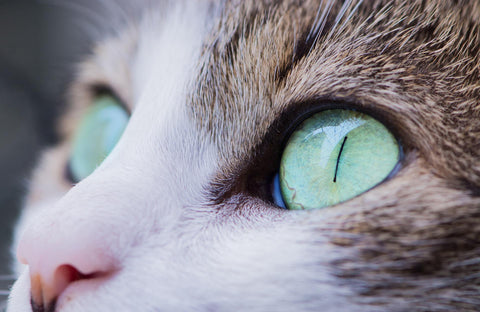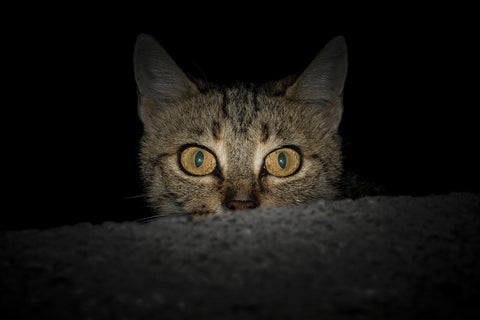Cats are amazing creatures with a whole host of myths and superstitions surrounding them. While some are easy to dismiss as fake news, like having nine lives and always landing on their feet, others are more intriguing, such as their ability to see in the dark. Although cats can’t see in total darkness, there is some truth to this belief. Let’s explore the fascinating truth behind cats and their vision.
The Truth Behind Cats Being Able to See in the Dark
Cats may not be able to see in complete darkness, but they possess impressive night vision. This extraordinary eyesight is a result of their wild ancestors, who were crepuscular creatures that hunted during the early and late hours. It was advantageous for them to have the ability to see in low-light conditions, which led to various adaptations in their eyes.
Cats have larger corneas and pupils than humans, allowing approximately 50% more light to enter their eyes. They can also expand their pupils wider than we can, making them perfect for moonlit nights. Furthermore, cats have vertically slit pupils, a characteristic they share with smaller ambush predators. This feature helps them judge the distance between their prey and adjust the intensity of light falling onto their retina. Additionally, cats have more receptors (rods) in their eyes, making them more sensitive to light. All of these adaptations combined enable cats to see up to eight times better than humans!
It’s Never Really Pitch Black
One reason why cats are often associated with seeing in the dark is that it’s never truly pitch black in the modern world. Whether cats are indoors or prowling the streets, there is usually some source of light. So, while it may appear pitch black to us, their eyes can make the most of the available light.
Are Cats Scared of the Dark?
Like humans, it’s challenging to give a definitive answer to whether cats are afraid of the dark. Each cat is unique and may have had different experiences that shape their response. If a cat has had a negative encounter in the dark, it may develop a fear of darkness. Other factors that could contribute to a cat’s fear of the dark include moving to a new house, the presence of aggressive dogs or other threats outside, and loud noises.
Signs that a cat may be scared include crying, dilated pupils, sweaty paws, and an increased heart rate. If you notice any of these signs when it’s “lights off” time, it’s a good idea to provide a night light to help alleviate their anxiety.
Frequently Asked Questions
Q: Can cats see colors?
A: Cats cannot see the colors red or green and perceive them as shades of gray instead.
Q: How fast can cats see moving objects?
A: Cats can track objects moving at a speed of four mm per second, which comes in handy when hunting.
Q: Do cats have better peripheral vision than humans?
A: Yes, cats have better peripheral vision than humans and can see up to approximately 200 degrees compared to our 180 degrees.
Q: How many eyelids do cats have?
A: Cats have three eyelids, providing extra protection for their eyes.
Q: How can I communicate with my cat?
A: You can communicate with your cat through slow blinking. Give it a try and see how your kitty responds!
Conclusion
While cats can’t see in complete darkness, they possess remarkable night vision. Their eyes have evolved to allow them to see in low-light conditions, and their vision is far superior to that of humans. Understanding that cats may have fears and anxieties in the dark can help us create a more comfortable and secure environment for our feline friends. So, next time you turn off the lights, consider leaving a night light on to ease any anxiety your cat may have. For more informative and interesting articles about cats and other pets, visit Pawsoha.

